
Alzando la fiamma sui tempi passati italiani:
Passato prossimo vs Imperfetto
Turning up the heat on Italian past tenses:
Passato Prossimo vs. Imperfetto
Hai fame di conoscere più i tempi passati italiani? Sei pronto a goderti un grande piatto di tempi passati italiani — il passato prossimo e l’imperfetto! Fantastico!
Are you hungry to learn more about Italian past tenses? Are you ready to enjoy a great big plate of Italian passato prossimo and imperfetto? Great!
Allora, immagini questo: sei in Italia, gustando un delizioso piatto di spaghetti alla carbonara. Vuoi raccontare ai vostri amici l’esperienza fantastica che hai avuto ieri, preparando la pasta in casa in cucina. Inizi a raccontare la storia in italiano, e all’improvviso, ti blocchi. Quale tempo passato dovresti usare? Il passato semplice o l’imperfetto?
So, picture this: you’re in Italy, enjoying a delicious plate of spaghetti carbonara. You want to tell your friends about the fantastic experience you had yesterday of making pasta for yourself in your own kitchen. You start telling the story in Italian, and suddenly, you freeze. Which past tense should you use? The simple past or the imperfect?
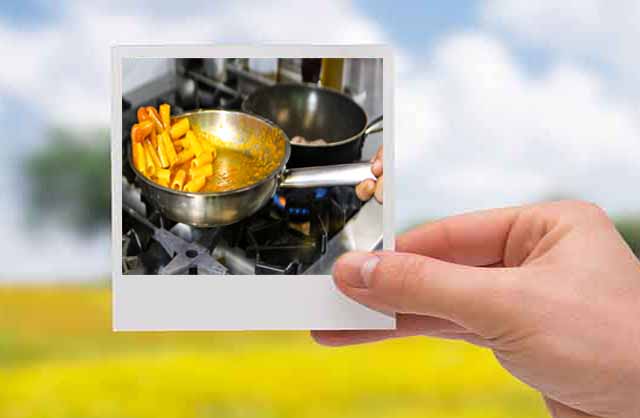
Il passato prossimo è come fotografia del passato
— a completed one time action in the past.
Beh, il semplice passato è come fotografia del passato. È usato per descrivere le azioni che sono accadute e sono state completate in passato. Per esempio, “Ho preparato gli spaghetti ieri sera.” Basta, finito!
Well, the simple past tense is like a snapshot of the past. It’s used to describe actions that happened and were completed in the past. For example, “I made spaghetti last night.” Boom, done, finished.
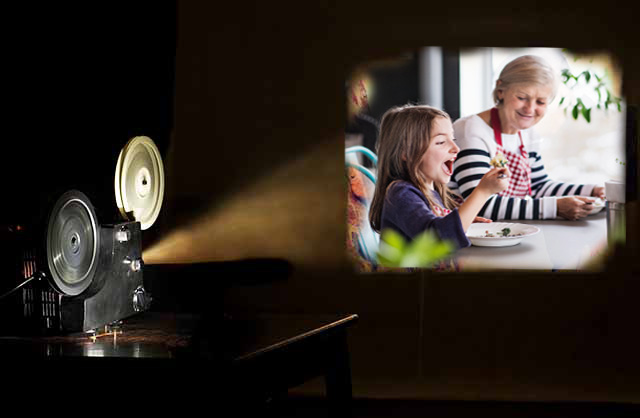
L’imperfetto è come un film che scorre continuamente
— an ongoing action in the past.
D’altra parte, il passato imperfetto è come un film in cui l’azione del passato scorre continuamente. È usato per descrivere azioni che erano in corso o abituali in passato. Per esempio, “Mangiavo gli spaghetti ogni domenica con la nonna quando ero un bambino.” Sembra un ciclo senza fine che ci mostra la bellezza di mangiare una buona pasta.
On the other hand, the imperfect past tense is like a movie reel of the past. It’s used to describe actions that were ongoing or habitual in the past. For example, “I used to eat spaghetti every Sunday with grandma when I was a kid.” It’s like a continuous loop of pasta-eating goodness.
Le cose si stanno scaldando nella nostra cucina grammaticale!
Mescoliamo la nostra pentola un po’ più e impariamo come
formulare il passato semplice e il tempo imperfetto.
Things are getting hot in our grammatical kitchen!
Let’s stir the pot some more and learn how to form
the simple past and imperfect tense.
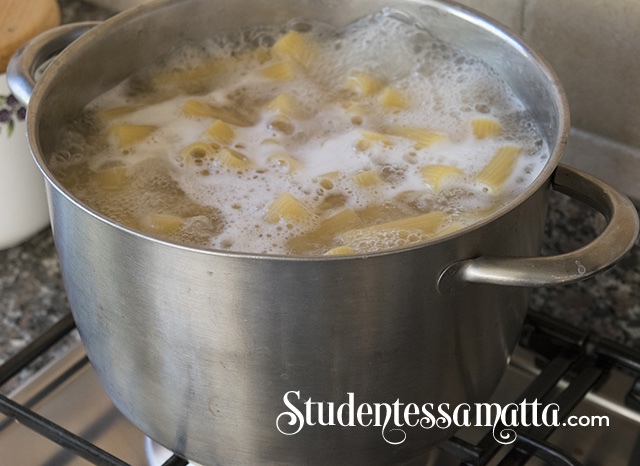
The Simple Italian Past Tense:
Passato Prossimo / Past Perfect

Passato Prossimo indicates a past event
that occurred at a precisely indicated time.
Il passato prossimo è usato per descrivere azioni ed eventi che si sono verificati nel passato, in particolare nel recente passato. È un indicazione di una durata di tempo preciso. Spesso si accompagna alle espressioni del tempo passato, come ieri, domenica scorsa, oppure un’ora fa.
The passato prossimo is used to describe actions and events that have occurred in the past, particularly in the recent past. It is an indication of a precise duration of time. It is often accompanied by an expression of past time, such as ieri, domenica scorsa, or un’ora fa.
È un tempo composto che consiste di due parti: il presente-tempo per di un verbo ausiliario, AVERE o ESSERE, e il participio passato del verbo principale.
It is a compound tense consisting of two parts: the present tense form of an auxiliary verb, either AVERE or ESSERE and the main verb’s past participle.
Cos’è l’ausiliare di un infinito verbale?
What is the auxiliary of a verb infinitive?
The past participle of regular verbs is formed by adding
-ATO, – UTO, –ITO to the Root of the Verb
COMPRARE
-ato to the stem of -are verbs: COMP + ATO = comprato
RICEVUTO
-uto to the stem of -ere verbs: RICEV+ UTO = ricevuto
CAPIRE
-ito to the stem of -ire verbs: CAP + ITO = capito
Transitive past tense verbs take AVERE + past participle.
La maggior parte dei verbi passati italiani formano il passato prossimo con l’ausiliare AVERE. I verbi del passato che prendono AVERE sono transitivi, cioè prendono un oggetto diretto che risponde alla domanda COSA o CHI?
Most Italian past tense verbs form the passato prossimo with the auxiliary AVERE. Past tense verbs that take AVERE are transitive; they take a direct object that answers the question WHAT or WHOM?
Ho mangiato [che cosa?] un panino.
I ate [what?] a panino.
Hai ordinato [che cosa?] un calice di vino.
You ordered [what?] a glass of wine.
Hai ordinato [che cosa?] un calice di vino.
You ordered [what?] a glass of wine.
Ieri lei ha visto [chi?] Giovanni.
Yesterday she saw [who] Giovanni.
La scorsa settimana avete incontrato [chi?] Maria.
Last week you met [who?] Maria.
Transitive verbs that take AVERE.
Comprare
Ho comprato
Hai comprato
Ha comprato
Abbiamo comprato
Avete comprato
Hanno comprato
Ricevere
Ho ricevuto
Hai ricevuto
Ha ricevuto
Abbiamo ricevuto
Avete ricevuto
Hanno ricevuto
Capire
Ho capito
Hai capito
Ha capito
Abbiamo capito
Avete capito
Hanno capito
Intransitive past tense verbs take ESSERE + past participle
Alcuni verbi passati italiani formano il passato prossimo con l’ausiliare ESSERE. I verbi del passato che prendono ESSERE sono intransitivi, non prendono un oggetto diretto. Molti coinvolgono il movimento. Questi verbi rispondono alle domande: A CHI, CON CHI, QUANDO, DA DOVE, A DOVE?
Some Italian past tense verbs form the passato prossimo with the auxiliary ESSERE. Past tense verbs that take ESSERE are intransitive; they do not take a direct object. Many involve movement. These verbs answer the questions: TO WHOM, WITH WHOM, WHEN, FROM WHERE, and TO WHERE?
A differenza dei verbi composti al passato accoppiati con AVERE, quelli accoppiati con ESSERE devono concordare con l’oggetto della frase in genere e numero.
Unlike compound past tense verbs paired with AVERE, those paired with ESSERE must agree with the sentence’s subject in gender and number.
Francesca è partitA [where to?] per Londra.
Giorgio è tornatO [where from?] dalla luna.
Io sono andatA [when?] alle nove.
Noi siamo andati [where?] in Sicilia.
Solo voi due siete restati [where] a casa.
Imperfect Past Tense: Imperfetto

The imperfetto expresses an ongoing past action
without a specified beginning or end time.
Mentre il Passato Prossimo esprime un’azione iniziata e completata nel passato recente, il passato imperfetto invece esprime un’azione passata indeterminata, cioè senza alcun riferimento a quando è iniziata o terminata. Spesso si accompagna alle espressioni: spesso, mentre, sempre, mai, tutti i giorni, ogni giorno, da piccolo, a volte, ogni tanto.
While the Passato Prossimo expresses an action begun and completed in the recent past, the Imperfect past tense instead expresses an indeterminant past action, without any reference to when it began or ended. Often it is accompanied by the expressions: often, while, always, never, every day, every day, every day, as a child, sometimes, sometimes.
It is used to talk about things that used to happen, or that were going on over a period of time in the past. It is used to describe the way things or people were. It is used to talk about habitual actions in the past. It is used to describe the weather, time of day, age, health, and mental and psychological states in the past.
A differenza del Passato Prossimo non è un tempo composto ed è un tempo abbastanza facile da imparare in quanto le desinenze verbali sono molto regolari.
Unlike the passato prossimo, it is not a compound tense and is fairly easy to learn as the verb endings are very regular.
-are verbs take the endings: -avo, -avi, -ava, -avamo, -avate, -avano
-ere verbs take the ending: -evo, -evi, -eva, -evamo, -evate, -evano
-ire verbs take the ending: -ivo, -ivi, -iva, -ivamo, -ivate, -ivano
Io
Tu
Lui/lei
Noi
Voi
Loro
Provare
Provavo
Provavi
Provava
Provavamo
Provavate
Provavano
Scrivere
Scrivevo
Scrivevi
Scriveva
Scrivevamo
Scrivevate
Scrivevano
Sentire
Sentivo
Sentivi
Sentiva
Sentivamo
Sentivate
Sentivano
A few exceptions exist for some imperfect tense verbs,
like ESSERE, BERE, DIRE, FARE.
Essere: ero, eri, era, eravamo, eravate, erano
Bere: bevevo, bevevi, beveva, bevevamo, bevevate, bevano
Dire: dicevo, dicevi, diceva, dicevamo, dicevate, dicevano
Fare: facevo, facevi, faceva, facevamo, facevate, facevano
Imperfetto is used to describe how people or things used to be:
Maria era una bellissima bambina.
Maria was a beautiful child.
Era piccola, allegra ed non aveva paura di niente.
She was small, cheerful and didn’t have fear of anything.
Imperfetto is used to describe habitual actions in the past.
Andavano ogni giorno a fare una passeggiata.
They used to go for a walk every day.
Ci divertivamo sempre quando eravamo insieme.
We used to have a lot of fun when we were were all together.
Imperfetto is used to describe the weather,
ime, day, physical conditions in the past.
Faceva bel tempo ieri.
It was nice out yesterday.
L’altro giorno si sentiva male.
The other day he felt sick.
Erano quasi dodici quando tu tornavi a casa ieri sera.
It was almost midnight when you returned home last night.
Ricorda che è possibile combinare
il passato prossimo con l’imperfetto.
Remember it is possible to combine the simple
past tense with the imperfect past tense.
Preparavo la cena quando tu mi hai telefonato.
I was making dinner when you called me on the phone.
Pensava a te quando hai bussato alla sua porta.
She was thinking of you when you knocked on her door.
Learning when to use Imperfetto or Passato Prossimo together.
Per esempio, diciamo che stai raccontando una storia su una vacanza che hai fatto l’anno scorso. Potresti dire: “Soggiornavamo in questo piccolo albergo carino, e ogni mattina facevamo una grande colazione prima di esplorare la città. Un giorno, abbiamo visitato un museo affascinante che ci ha lasciato senza parole.”
For example, let’s say you’re telling a story about a vacation you took last year. You might say: “We were staying in this cute little hotel, and every morning we had a big breakfast before exploring the city. One day, we visited a fascinating museum that left us speechless.”
La prima parte della frase (“soggiornavamo”) usa l’imperfetto perché descrive un’azione continuativa nel passato. La seconda parte della frase (“facevamo una grande colazione”) usa anch’essa l’imperfetto poiché descrive un’azione ripetitiva nel passato. Tuttavia, nell’ultima frase (“abbiamo visitato un museo”), viene usato il passato prossimo perché descrive un’azione completata nel passato.
The first part of the sentence (“soggiornavamo”) uses the imperfect because it describes an ongoing action in the past. The second part of the sentence (“facevamo una grande colazione”) also uses the imperfect as it describes a repetitive action in the past. However, in the last sentence (“abbiamo visitato un museo”), the present perfect is used because it describes a completed action in the past.
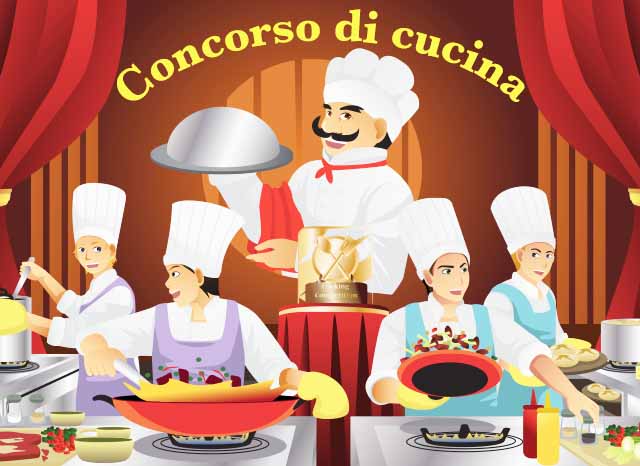
Un po’ di pratica! Time for some practice!
Here is a little story about a reality show cooking contest.
Fill in the blanks with passato prossimo or imperfetto.
See below for english translation & end of post answer key
La scorsa serata [GUARDARE] _____________ un reality show di cucina che [ESSERE] _____________ tanto divertente quanto delizioso. Lo show [TENERSI] _____________ nello studio della RAI a Cinecittà, a Roma. Il pubblico era pieno di spettatori entusiasti, tutti ansiosi di vedere chi avrebbe vinto la competizione culinaria. Il premio? Un cappello da chef fatto di puro oro.
Alle 20:45, tutti i partecipanti [SALIRE] _____________ sul palco e [PRESENTARSI] _____________. I concorrenti [PROVENIRE] _____________ da tutto il mondo, alcuni già ben noti e famosi. Tuttavia, c’era un uomo completamente sconosciuto: Giovanni Maestrani.
Il pubblico [OSSERVARE] _____________ mentre gli chef [PRENDERE] _____________ posto nella cucina del set, ciascuno pronto per iniziare la competizione. Pochi minuti prima delle nove, il presentatore [INIZIARE] _____________ il conto alla rovescia. Quando è suonato il buzzer di partenza, i cuochi [METTERSI] _____________ rapidamente al lavoro.
Mentre gli altri [DEDICARSI] _____________ a piatti fantasiosi e complessi, Giovanni [PRENDERE] _____________ dalla dispensa un piccolo barattolo di spezie, una bottiglia di olio d’oliva e un pacchetto di pasta secca. [METTERE] _____________ una pentola d’acqua sul fuoco per farla bollire e [COMINCIARE] _____________ a tritare uno spicchio d’aglio.
Alla fine della competizione, chi [PREPARARE] _____________ il miglior piatto e chi [RICEVERE] _____________ il premio del Cappello d’Oro da Chef? Giovanni Maestrani [GUARDARE] _____________ con una perfetta ciotola di spaghetti! [USARE] _____________ una ricetta che sua nonna gli [PREPARARE] _____________ quando [ESSSERE] _____________ bambino. Ci [ESSERE] solo quattro ingredienti semplici: aglio, olio d’oliva, peperoncini secchi piccanti e spaghetti.
Mentre gli [METTERE] il cappello d’oro da chef sulla testa, Giovanni [PENSARE] tra sé e sé che a volte i migliori piatti sono quelli che ci fanno ricordare il passato e le nostre nonne.
Last night, we watched a cooking reality show that was as entertaining as it was mouthwatering. The show was held in the RAI TV studio at Cinecittà in Rome. The audience was filled with eager spectators, all anxious to see who would win the cooking competition. The prize? A chef’s hat made of pure gold.
At 8:45 PM, all the participants took the stage and introduced themselves. The competitors hailed from all over the world, some already well-known and famous. However, there was one man who was a complete unknown: Giovanni Maestrani.
The audience watched as the chefs took their places in the on-set kitchen, each ready to start the competition. A few minutes before nine o’clock, the presenter began the countdown. When the starting buzzer rang, the cooks quickly sprang into action.
While the others busied themselves with imaginative and complex dishes, Giovanni collected a small jar of spices, a bottle of olive oil, and a package of dried pasta from the pantry. He set a pot of water on the fire to boil and then began chopping a clove of garlic.
At the end of the competition, who had prepared the best dish and who received the Golden Chef’s Hat Award? Giovanni Maestrani won with a perfect bowl of spaghetti! He used a recipe his grandmother made for him when he was a child. There were only four simple ingredients: garlic, olive oil, spicy dried peppers, and pasta noodles.
As they placed the chef’s gold hat on his head, Giovanni thought to himself, sometimes the best dishes are those that bring back memories of the past and our grandmothers.
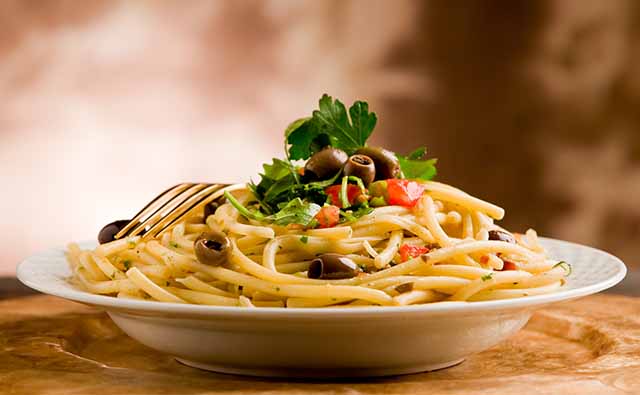
Sia cucinare gli spaghetti alla perfezione che padroneggiare i tempi passati italiani richiedono preparazione, dedizione e pratica. Quando inizi a cucinare gli spaghetti “al dente” perfetti, a volte le tagliatelle risultano appiccicose e collose. Allo stesso modo, quando inizi a usare il passato prossimo e l’imperfetto, possono diventare confusi e un po’ difficili, rendendo difficile distinguerli l’uno dall’altro. Tuttavia, con pazienza, pratica e un atteggiamento positivo, presto sarai in grado di “servire” frasi perfette al passato.
Both cooking spaghetti to perfection and mastering Italian past tenses require preparation, dedication, and practice. When you first attempt to cook perfect “al dente” spaghetti, the noodles might turn out pasty and sticky. Similarly, when you begin using the simple and imperfect past tenses, they can become confusing and a bit tricky, making it hard to distinguish one from the other. However, with patience, practice, and a positive attitude, you will soon be able to serve up perfect past tense sentences.
Che si tratti di preparare un delizioso piatto di spaghetti o di imparare una nuova lingua, ricordati di goderti il processo e assaporare i deliziosi risultati! Buon appetito e buoni studi.
Whether preparing a scrumptious plate of spaghetti or learning a new language, remember to enjoy the process and savor the delicious results! Good eating, and happy studying.
Answers to story above
La scorsa notte abbiamo guardato un reality show di cucina che è stato tanto divertente quanto delizioso. Lo show si teneva nello studio della RAI a Cinecittà, a Roma. Il pubblico era pieno di spettatori entusiasti, tutti ansiosi di vedere chi avrebbe vinto la competizione culinaria. Il premio? Un cappello da chef fatto di puro oro.
Alle 20:45, tutti i partecipanti sono saliti sul palco e si sono presentati. I concorrenti provenivano da tutto il mondo, alcuni già ben noti e famosi. Tuttavia, c’era un uomo completamente sconosciuto: Giovanni Maestrani.
Il pubblico osservava mentre gli chef prendevano posto nella cucina del set, ciascuno pronto per iniziare la competizione. Pochi minuti prima delle nove, il presentatore ha iniziato il conto alla rovescia. Quando è suonato il buzzer di partenza, i cuochi si sono messi rapidamente al lavoro.
Mentre gli altri si dedicavano a piatti fantasiosi e complessi, Giovanni ha preso dalla dispensa un piccolo barattolo di spezie, una bottiglia di olio d’oliva e un pacchetto di pasta secca. Ha messo una pentola d’acqua sul fuoco per farla bollire e ha iniziato a tritare uno spicchio d’aglio.
Alla fine della competizione, chi aveva preparato il miglior piatto e chi ha ricevuto il premio del Cappello d’Oro da Chef? Giovanni Maestrani ha vinto con una perfetta ciotola di spaghetti! Ha usato una ricetta che sua nonna gli preparava quando era bambino. C’erano solo quattro ingredienti semplici: aglio, olio d’oliva, peperoncini secchi piccanti e spaghetti.
Mentre gli mettevano il cappello d’oro da chef sulla testa, Giovanni pensava tra sé e sé che a volte i migliori piatti sono quelli che ci fanno ricordare il passato e le nostre nonne.












answers to the imperfect vs passato prossimo?
Ciao! If you would like the answers to the practice set write me at: melissa@studentessamatta.com
Ci sentiamo!